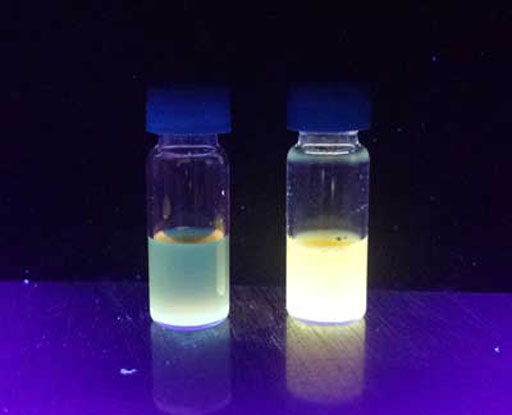Transient Fluorescent Tattoos Mark Surgical Sites
By HospiMedica International staff writers
Posted on 05 Jan 2017
A new study describes a novel ink to mark surgery targets on the skin, which glows only under certain light conditions and disappears altogether after a period of time.Posted on 05 Jan 2017
Developed by researchers at the California NanoSystems Institute (CNSI; Santa Barbara, CA, USA), Academia Sinica (Taipei, Taiwan), and other institutions, the time-limited pigment is based on cross-linked fluorescent supramolecular nanoparticles (c-FSNPs), which encapsulate a fluorescent conjugated polymer into a core via a supramolecular synthetic approach. The result is micrometer-sized c-FSNPs, which exhibit an ideal size-dependent intradermal retention time of up to three months.

Image: A new temporary pigment marks dermal surgical sites (Photo courtesy Hsian-Rong Tseng/ CNSI).
The temporary pigment has optimized photophysical properties and intradermal retention time for successful in vivo finite tattooing. Under ambient lighting, the nanoparticles are invisible, avoiding unwanted markings on a patient's skin; but under a light at a wavelength of 465 nanometers, the pigment glows fluorescently, marking the surgical target. In addition, the inflammatory responses induced by c-FSNPs are undetectable after tattooing. The study describing the new pigment was published on November 30, 2016, in ACS Nano.
“Commercially available tattoo pigments possess several issues, which include causing poor cosmesis, being mistaken for a melanocytic lesion, requiring additional removal procedures when no longer desired, and potentially inducing inflammatory responses,” concluded senior author Hsian-Rong Tseng, PhD, of CNSI, and colleagues. “We believe that the c-FSNPs can serve as a ‘finite tattoo’ pigment to label potential malignant nonmelanoma skin cancer lesions.”
Tattooing has been utilized by the medical community for precisely demarcating anatomic landmarks, which is especially important for identifying biopsy sites of nonmelanoma skin cancer (NMSC) due to the long interval between the initial diagnostic biopsy and surgical treatment.
Related Links:
California NanoSystems Institute
Academia Sinica














